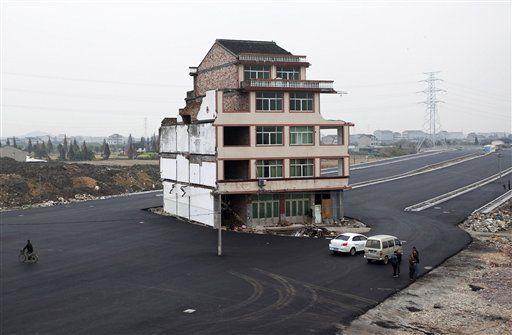built
Roads Emergency

It’s a design emergency. Road trauma is the number one cause of death and injury for children in every country of the world. And crashes disproportionately affect the poor with 9 out of 10 deaths occurring in low- and middle-income countries.
While the engineers huddle over traffic and urban planning, there’s one monster big enough for the educational front.
Your lovable pal Grover has taken on the role of Global Road Safety Ambassador in support of the United Nations’s Decade of Action for Road Safety.
Ambassador Grover stars in a series of PSA’s developed by Sesame Workshop and the Global Road Safety Partnership to accompany a Road Safety Education Framework for educators, parents, and communities.

Inspired by the success of the red ribbon for HIV/AIDS and the white band against global poverty, the Decade of Action group is also promoting a yellow Road Safety Tag to increase awareness of the issue. Sports figures, celebrities, and politicians have been spotted wearing the tag.
Google Earth and the Middle East
Ogle Earth runs down a brief list of ways Google Earth and the availability of satellite imagery in recent years have fueled class resentment and conflict in Bahrain, Iran, Iraq, Israel, Saudi Arabia, Sudan, Syria, Tunisia, and Yemen.
Leading the list are dramatic visualizations comparing the overcrowded living conditions of the Shiite majority in Bahrain with the palaces, estates, and private islands of the ruling families. After the country’s ISPs were ordered to block access to Google Earth’s imagery in 2006, this PDF of annotated screencaps illustrating the spatial inequities circulated widely by email.
Influencing Behavior through Design
“All design influences our behaviour, but as designers we don’t always consciously consider the power this gives us to help people, (and, sometimes, to manipulate them).”
Dan Lockton has posted a fantastic resource, Design with Intent. Formerly known as Architecture of Control, this book of cards features 101 design patterns for influencing behavior through form, feedback, and interface. The techniques span media from architecture and product design, to signage, interaction and graphic design and influence users by making choices easy, difficult, confusing or fun in sometimes subtle or provocative ways. The cards are organized by mode as follows:
You can download the complete set here. It’s a great primer on interaction design in the real world and a useful lens for looking at the politics of access and usability and the quiet frameworks of design and power that shape our daily lives.
 A call for Israeli architects and planners to refuse to design settlements in Ariel, a sliver of land that goes deep into Palestinian territory: “After dozens of actors, theater workers, professors and writers declared their refusal to appear in the new cultural hall in Ariel or any other settlement, the time has come for architects and planners to wake up and announce publicly that they will not continue planning new buildings in the settlements. Architects and planners are the ones who implement in practice the occupation policy of Israeli governments and continue the conflict on the drafting table.” (via)
A call for Israeli architects and planners to refuse to design settlements in Ariel, a sliver of land that goes deep into Palestinian territory: “After dozens of actors, theater workers, professors and writers declared their refusal to appear in the new cultural hall in Ariel or any other settlement, the time has come for architects and planners to wake up and announce publicly that they will not continue planning new buildings in the settlements. Architects and planners are the ones who implement in practice the occupation policy of Israeli governments and continue the conflict on the drafting table.” (via)Update 9/6/2010: More than 150 US and UK actors, writers, and directors have signed a letter of support for the Israeli actors who said they would not perform in Ariel.
Space Agents
Wow, it’s been a while since my last post. If and when I do retire this space, I dream of converting it into more of a database of ideas than a reverse-chronological history of my random walks.
For instance, I like what’s happening at spatialagency.net, a database of architectural practices engaged with social and political concerns. The last few years have seen growing number of projects cataloging design and architecture for good, but I think this one has a nice historical breadth and expansive perspective of what constitutes a design practice. I’m not totally down with the “acting on behalf of-” line, but I like the emphasis on context:
Spatial Agency is an ongoing research project that aims to shift the of focus of architectural discourse from one that is centred around the design (= building) and making (= technology) of buildings to one where architecture is understood as a situated and embedded praxis conscious of and working with its social, economic and political context.
In the spirit of Cedric Price the project started with the belief that a building is not necessarily the best solution to an architectural problem. Architecture, and it is easy to forget this, is about a lot more than just objects in space. The project attempts to uncover a second history of architecture, one that looks at other ways that people have operated beyond the building, working on behalf of others as spatial agents. Buildings are of course not excluded, but the project expands its reach to cover all aspects of spatial production - from publications to pedagogy, activism to enabling.
Non-Profit Design

How does one make design for social change sustainable and scalable? To build a replicable model and an enduring momentum?
As someone who’s worked with non-profits for many years, I’ve occasionally thought about perhaps starting one of my own as a way of institutionalizing some of my activism and work, ideas, research and outreach.
You might be surprised to learn that the largest charity in the world is not run by Bill and Melinda Gates, but is one that promotes and supports innovation in the field of architectural and interior design. That’s the Stichting INGKA Foundation, the Dutch Foundation that owns IKEA.
I have more modest ambitions and checking out the prior art, I found there’s no shortage of design-driven non-profit organizations. A search on GuideStar, a database of non-profit organizations, turns up over 5,000 search results matching the term “design.” In my survey of design-centric non-profit organizations here are some I thought were notable. This list is not exhaustive (for instance, it does not include some amazing educational institutions, museums, or documentary projects) and the examples here are all US-based, but take a look.
page 20 19 18 17 16 15 14 13 12 11 10 9 8 7 6 5 4 3 2 1 Older »



